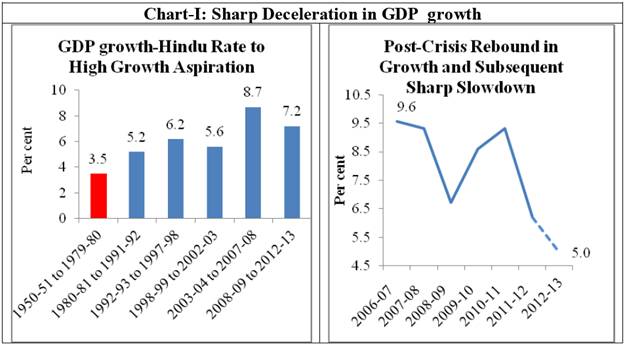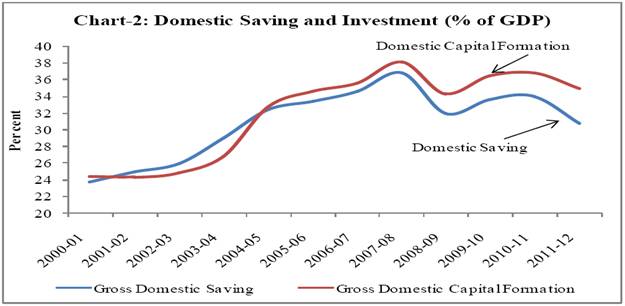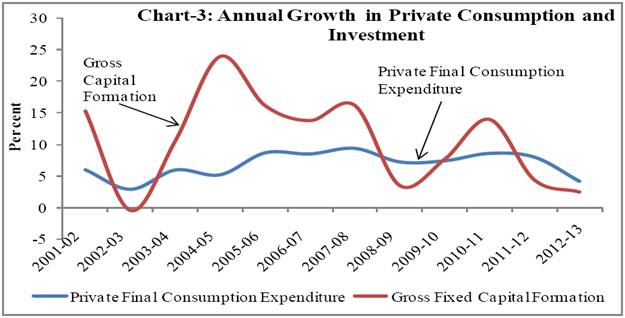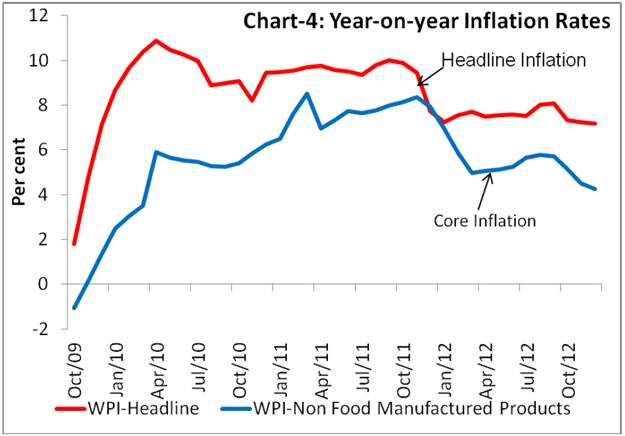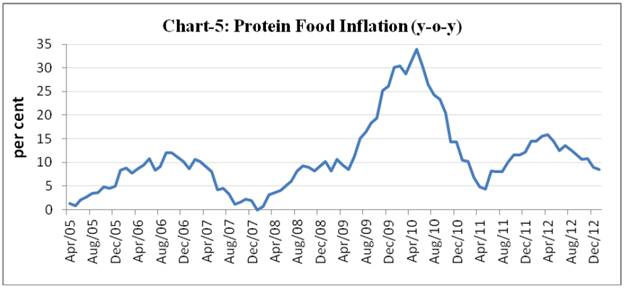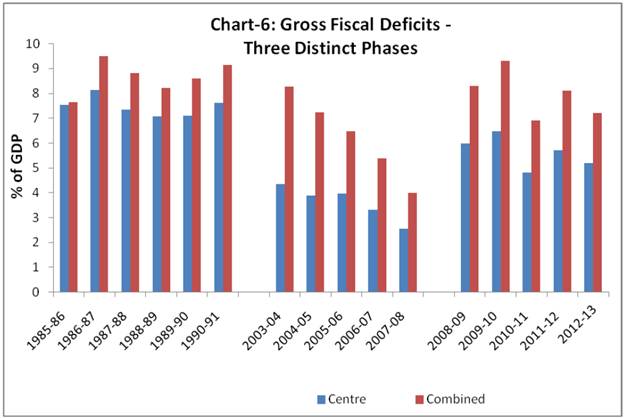India’s Macroeconomic Challenges Some Reserve Bank Perspectives - ربی - Reserve Bank of India


India’s Macroeconomic Challenges Some Reserve Bank Perspectives
Dr. D. Subbarao, Governor, Reserve Bank of India
delivered-on مارچ 13, 2013
First of all many thanks to the London School of Economics for inviting me to deliver the fifth I.G. Patel Memorial Lecture. It is an honour to which I attach immense value. Dr. I.G. Patel 2. Dr. I.G. Patel represents a special bond between our two institutions - the Reserve Bank which I represent and the LSE where this lecture is instituted. Dr. Patel led both these institutions with great dignity and distinction, and is loved and respected by both our institutions. 3. Because the occasion demands it, I must repeat what I said at the Reserve Bank’s Platinum Jubilee celebrations in 2010. 4. Those of you who have an interest in the history of science would know that Sir Isaac Newton was known, among other things, also for his intellectual arrogance. When his friend and rival, Robert Hooke wrote to him, lauding his theory of gravity, Newton, for all his arrogance, wrote back with uncharacteristic humility: “If I have been able to see a little farther than others, it is because I am standing on the shoulders of giants.” 5. That is a statement I can relate to. As the Governor of the Reserve Bank in these exciting times, I owe an intellectual debt of gratitude to the extraordinary men who led the Reserve Bank through several challenges, and made a mark in the economic history of India. Among the most distinguished of them is Dr. I.G. Patel. I am privileged to be in the same lineage as him. 6. During his long and illustrious career in India, Dr. Patel made very significant and lasting contribution to economic governance of India. He was Governor of the Reserve Bank at a critical time when the Indian economy had to battle a balance of payments crisis triggered by the second oil price shock in the late 1970s. He played an active role in securing accommodation for India from the IMF’s Extended Fund facility, an arrangement that was the largest in the Fund’s history at that time. 7. Indeed, Dr. Patel was the intellectual force behind resolving some of our biggest macroeconomic challenges of his time. As the Governor of the Reserve Bank today, I am involved in addressing some of India’s current macroeconomic challenges. The leadership that my predecessors provided in confronting these challenges always remains a source of motivation and inspiration for me in navigating through these challenges. I thought the best way I can honour the memory of late Dr. I.G. Patel is to talk about India’s current macroeconomic challenges from the Reserve Bank’s perspective. India - Current Macroeconomic Context 8. India clocked an average growth of 9.5 per cent in the three year period before the global financial crisis (2005-08). For a nation that once believed that the ‘Hindu Rate of Growth’ was its destiny, this remarkable growth performance was cause for celebration. It was also a trigger for setting off an aspiration for double digit growth. 9. Today, there is a sharp reversal. Growth has decelerated, inflation is still high and stubborn, the investment rate has declined sharply and the external sector is beset with a record high current account deficit. This downturn has caused widespread anxiety that we may have got derailed from the high growth trajectory. It has also raised a number of questions. Is our growth story faltering? Has India’s potential growth rate declined? Are the growth drivers that worked our way during 2003-08 still intact? Has the world lost confidence in India’s growth promise? When will we reach double digit growth, and what indeed should we be doing to get there? 10. My short answer to all these questions is that the India growth story is still credible and that the long term growth drivers are still intact. If we do the right things, we can get back on a high growth trajectory. Equally, there is nothing inevitable about the India growth story. We can accelerate growth and improve welfare only if we effectively implement wide ranging economic and governance reforms. Slipping up on this will amount to a costly and potentially irreversible squandering away of opportunities. 11. The Government has to be at the center of this and lead the process of economic revival. As the central bank and as the regulator of large segments of the financial sector, the Reserve Bank too has an important role to play in this. What I propose to do today is to discuss some important macroeconomic challenges from the Reserve Bank’s perspective. 12. In particular, I will discuss three challenges:
First Challenge: Managing Growth-Inflation Dynamics Growth 13. The global financial crisis affected virtually every economy in the world, and India was no exception. But we recovered from the crisis much sooner than even other emerging economies. In the crisis year of 2008/09, growth dropped to 6.7 per cent, but it recovered smartly thereafter. In fact, in the two years after the crisis, 2008/09 and 2009/10, growth averaged 9.0 per cent which compares favourably with the average growth of 9.5 per cent in the three years before the crisis. However, last year, 2011/12, growth moderated to 6.2 per cent, and the first advance estimates suggest that growth this year may drop further to 5.0 per cent, the lowest in a decade (Chart-1). 14. To understand the latest downtrend, it is important first to understand the pre-crisis growth surge. Several explanations are offered for India’s growth acceleration in the pre-crisis period: the impact of economic reforms of the 1990s; India’s rapid integration with the global economy; rise of entrepreneurism; and increase in productivity. 15. Underlying all these factors was the massive increase in capacity as investment jumped from 26.9 per cent of GDP in 2003/04 to 38.1 per cent in 2007/08 (Chart-2). This increase in investment was financed by growing domestic saving, and was accompanied by an increase in productivity driven by improvements in technology, organization, financial intermediation and external and domestic competitiveness. The current account deficit (CAD) during this period averaged just 0.3 per cent of GDP suggesting that the contribution of foreign savings to domestic investment was relatively modest. But to the extent foreign saving came by way of foreign direct investment (FDI), it raised the productivity of overall investment and resulted in higher exports. 16. In the immediate post-crisis period, even as investment slowed, private consumption demand, which accounts for about 57 per cent of GDP, held up as rural incomes grew robustly on the back of the crisis driven stimulus as well as the expanded safety-net programmes of the government. This kept growth up but also fuelled inflation reflecting excess of demand over supply. 17. So, what explains the downturn in growth over the last two years? The answer would be a slowing of demand across the board. Private investment decelerated sharply, in part reflecting the global downturn, but largely owing to domestic factors. Business profitability was dented by tightening infrastructure constraints and increasing input prices stemming from high food and fuel inflation. Business confidence was hit by a rising fiscal deficit, vacillating commitment to reforms and governance concerns, all of which dampened investor perceptions on returns to investment. 18. On top of the decline in private investment, private consumption demand, which was the bulwark of the quick recovery from the crisis, too started slowing in recent years exacerbating the growth slowdown (Chart-3). It is estimated to have slowed to 4.1 per cent during the current year, down from an average of 8.3 per cent in the previous two years. Inflation 19. Just as India recovered from the crisis sooner than other countries, inflation too caught up with us sooner than elsewhere. Inflation, as measured by the wholesale price index (WPI), went briefly into negative territory for a few months in 2009 but started rising sharply thereafter, clocking a peak rate of 10.9 per cent in April 2010. Average WPI inflation was 9.6 per cent in fiscal year 2010/11, 8.9 per cent in 2011/12 and 7.5 per cent during the first ten months of 2012/13 (Chart-4). The story therefore is that at 8.7 per cent, the average inflation over the last three years has been higher than the average inflation of 5.4 per cent during the previous decade (2000-10) What is Driving Inflation? 20. Both supply side and demand side factors have contributed to the buildup of inflationary pressures. 21. A major driver from the supply side has been food inflation, which has both structural and cyclical components. The structural component arises from rising incomes, especially in rural areas, which is leading to a shift in dietary habits from cereals to protein foods. Inflation of protein food prices remained in double digits for much of the last three years barring a few months (Chart-5). The cyclical component of food inflation arises from the monsoon related spike in prices of food items such as vegetables. Notwithstanding all the talk of drought proofing the economy, the timely onset of the monsoon and its spatial and temporal distribution continue to influence the inflation outlook in India. 22. The second major factor driving the current episode of inflation has been global commodity prices, especially the price of crude oil. India imports 80 per cent of its oil demand. The global price of oil is therefore an important variable in determining the inflation outlook. The depreciation of the rupee, starting October 2011, has compounded the inflationary impact of oil prices. 23. If the domestic petroleum sector was a free market and if global prices passed through to domestic prices, demand would arguably have declined in response to rising prices. But such a demand adjustment was blocked by the administered (subsidized) pricing regime of petroleum products. 24. Subsidization did not, however, protect us from inflation pressures - the cost of subsidies raised the fiscal deficit which fuelled inflation. So, any softening of inflation that we gained through subsidization was offset by a larger fiscal deficit. 25. There is a debate in India about the macroeconomic and welfare dimensions of subsidies financed, not by government surpluses, but by government borrowing. An argument against de-subsidization is that it will be inflationary. Sure, it will be inflationary in the short-term, but price pressures will even out over the medium term. Also, the inflation impact should not be overstated. To the extent lower subsidies result in a lower fiscal deficit, there would be some disinflationary impact even in the short-term. Finally, reduction in subsidies will remove price distortions, improve efficiency and provide a much better investment environment. 26. The third major factor fuelling inflation has been wage pressures. Nominal rural wages increased at double digit rates over the last five years. Indeed, they increased so rapidly that, despite high retail inflation, real wage growth surged close to double digits in the last three years (Table-1). The Government’s social safety-net programmes contributed to, and sustained, the wage-price spiral. In an economy with a per capita income of about US $1500, any increase in income quickly translates into increase in consumption demand and that is exactly what was witnessed in India. Producers were able, until very recently, to pass on the higher input prices in the form of higher output prices without sacrificing their margins.
Growth-Inflation Dynamics 27. India’s growth-inflation dynamics pre-crisis and post-crisis present a study in contrast. In the three year period before the crisis, the economy expanded by 9.5 per cent on average, aided by growth in fixed investment above 15 per cent per year. This expanded production capacity to match growing demand and kept core inflation in check. Post-crisis, the story reversed. Investment declined to half its pre-crisis rate whereas consumption demand remained at the pre-crisis level until last year, owing partly to the government’s entitlement and welfare programmes, opening up a positive output gap during 2009-11 and stoking core inflation. Two Questions About Growth-Inflation Dynamics 28. The growth-inflation dynamics of recent years that I briefly summarized above raise two interesting and related policy questions. The first is about India’s potential growth rate and the second is about why inflation is persisting at an elevated level even in the face of steeply moderating output growth. Let me briefly address them. What is India’s Potential Growth Rate? 29. There is considerable evidence from research done at the IMF and the Bank for International Settlements (BIS) that potential growth rates may have declined significantly in both advanced and emerging economies. India too, despite being less integrated with the global economy than other EMEs, has seen a drop in its potential growth rate. Reserve Bank estimates show that the potential growth before the crisis was in the range of 8.0 - 8.5 per cent. This estimate was scaled down to 7.0 per cent after the crisis owing to a host of factors - decline in the pace of capital formation, supply constraints, especially of infrastructure, pressure on factor productivity because of tepid progress on reforms and a high fiscal deficit. 30. Some analysts contend that the potential growth rate may have dipped even below the Reserve Bank’s post-crisis estimate of 7 per cent. The argument is that with growth dipping below 7 per cent last year and projected to dip even lower this year, we should have seen inflation and current account deficit soften. On the other hand, inflation persists at an elevated level and the current account deficit is likely to be the highest ever, suggesting that the economy is growing beyond its capacity and that the potential growth may be lower than even 7 per cent. Why are India’s Growth-Inflation Dynamics contrarian? 31. The second and related question is about why India’s macroeconomic dynamics are contrarian. In particular, over the last two years, many of our peer EMEs have also experienced a growth deceleration, but in line with standard theory, several of them have also seen a moderation in their inflation rates. In India, however, inflation has not come down in line with growth deceleration. Several idiosyncratic factors are put forward to explain this uniqueness of our macroeconomic situation: supply bottlenecks, particularly in infrastructure, sectoral imbalances, rise in wages without a corresponding increase in productivity, higher fiscal deficit and larger depreciation of the exchange rate than in the case of our peers. Reserve Bank’s Action to Curb Inflation 32. To control inflation, the Reserve Bank reversed the crisis period’s accommodative monetary stance in quick order. We raised the policy interest rate (repo rate) 13 times, cumulatively by 375 basis points (bps) - from 4.75 per cent to 8.5 per cent. Also we raised the reserve requirement on banks - the cash reserve ratio (CRR) - by 100 bps from 5 per cent to 6 per cent. Monetary policy is known to work with lags, and as a consequence of the tight monetary policy, WPI inflation which peaked at 10.9 per cent in April 2010, has come down to 6.6 per cent in January 2013. 33. In response to deceleration in growth and decline in inflation, the Reserve Bank eased the monetary policy stance starting January 2012 cutting both the repo rate (by 75 bps) and the CRR (by 200 bps). Criticism Against Reserve Bank’s Monetary Policy Stance 34. The Reserve Bank has been criticized for its anti-inflationary stance. Let me address some of the main strands of that criticism if only to illustrate the dilemmas that we face in managing the growth-inflation trade-off. Monetary Policy has Only Stifled Growth, But has not Tamed Inflation 35. By far the most common criticism has been that tight monetary policy has stifled growth but has not tamed inflation. My response to this criticism is the following. First, inflation has come off from its peak by over about 4 percentage points. Admittedly, growth too has moderated. However, the Reserve Bank’s anti-inflation stance is motivated by the dictum that inflation is inimical to growth and that only in a situation of price stability can consumers and investors make informed choices. 36. It is important also to note that in order to contain inflation, monetary policy seeks to curb demand which, in turn, restrains growth. As per this logic, reduction in growth is an inevitable outcome of tight monetary policy. But this sacrifice is only in the short-term. In the medium term, there is no growth-inflation trade off; on the contrary, low and stable inflation secures sustained high medium term growth. And this is what the Reserve Bank is aiming at. 37. It is important to note in this context that the relationship between growth and inflation is non-linear. At low levels of inflation and stable inflation expectations, there is a trade-off between growth and inflation - some inflation can be tolerated to grease the wheels of growth. But above a certain threshold level of inflation, this relationship reverses, the conventional trade-off disappears, and high inflation actually starts taking a toll on growth. Estimates by the Reserve Bank using different methodologies put the threshold level of inflation in the range of 4 to 6 per cent. Inflation above 6 per cent would therefore justify, indeed demand, tightening of the monetary policy stance. It is this understanding that informed the Reserve Bank’s monetary policy stance. Monetary Policy Tightening is Inappropriate to Combat Supply Shock Driven Inflation 38. A second and related criticism of the Reserve Bank’s anti-inflationary monetary policy stance has been that India’s recent inflation is driven by supply shocks in food and fuel items and that monetary tightening does not help restrain inflation in such a case. It only results in avoidable sacrifice of growth. 39. I have several responses to this criticism. The first is that inflation was driven not just by supply shocks but by demand pressures as well, as evidenced by output expanding faster than the potential growth rate in the immediate post-crisis years of 2009/10 and 2010/11, the large and growing current account deficit and rapid growth in consumption demand. 40. Admittedly, there were supply shocks too, in addition to demand pressures,that were stoking inflation pressures. Monetary policy response to supply shocks is a deliberate balancing act because errors can be costly in terms of lost growth. If the judgement is that the supply shock is transitory (such as cyclical increase in vegetable prices), the preferred policy response should be to not respond by monetary tightening. If on the other hand, the judgement is that the supply shock is structural in nature and will persist, monetary policy has to respond since persistent inflation, no matter what the driver, stokes inflation expectations. Monetary policy is inevitably the first line of defence to guard against inflation getting generalized through unhinged inflation expectations. The Reserve Bank’s policy response has been guided by the above consideration. 41. To sum up, the surmise from the challenge posed by the growth-inflation dynamics is the following. Today’s investment is tomorrow’s production capacity. India needs to not only reverse the investment downturn but also increase it significantly to raise production to match the growing consumption demand. Increase in investment is necessary also to raise production for exports and thereby create jobs at home. Making this happen requires a supply response from the government by way of providing public goods and creating a conducive environment for private investment. Meanwhile, the Reserve Bank has to ensure that inflation is brought down to the threshold level and is maintained there. Second Challenge: Mitigating the Vulnerability of the External Sector 42. Over the last two years, India’s balance of payments (BoP) has come under growing pressure as evidenced most clearly by a large and increasing current account deficit (CAD). The CAD last year (2011/12) was 4.2 per cent of GDP, historically the highest; the CAD during the current year is expected to be even higher. 43. Many will recall that India went through a balance of payments crisis in 1991 which, in fact, triggered wide ranging structural reforms that gave a market orientation to the economy. Despite India’s growing integration with the global economy, the external sector remained robust for over 15 years after that. The current episode of BoP pressures, when the CAD is higher than it was at the peak of the 1991 BoP crisis (3 per cent of GDP) is, therefore, causing apprehensions about whether we have the capacity to stem the pressures and restore the BoP to a sustainable path. 44. The increase in CAD is quite evidently a consequence of imports growing faster than exports. (Table-2)
45. The increase in imports is largely accounted for by oil and gold imports. To understand the pressure these two items have put on the BoP, it is instructive to note the following. Net of oil and gold imports, CAD last year would have been in surplus of 3.8 per cent of GDP in contrast to a deficit of 4.2 per cent of GDP. The surge in gold imports is explained largely by the erosion in real returns on other assets owing to inflation. The reason oil imports have been price inelastic is due to the fact that nearly 60 per cent of petroleum products pass through an administered price regime; oil demand to that extent does not adjust to price increases. On the other hand, exports were not helped even though the real exchange rate depreciated, reflecting the fact that in a subdued global economy, exports are more sensitive to income (i.e. global demand) than to price. 46. Reflecting the current and capital accounts in the BoP, the exchange rate depreciated both in nominal and real terms (Table - 3)
Three Concerns About CAD 47. There are mainly three concerns about the CAD in the balance of payments: (i) the quantum of CAD; (ii) the quality of CAD; and (iii) the financing of CAD. Let me briefly address each of these. Quantum of CAD 48. Reserve Bank’s estimates show that the sustainable CAD for India is 2.5 per cent of GDP. A CAD above the sustainable level, year after year, is a clear macroeconomic risk as it raises concerns about our ability to meet our external payment obligations and erodes the confidence of potential lenders and investors. 49. An additional concern is that we are having a large CAD even in the face of slowing growth. This is perplexing because economic logic suggests that the CAD should improve in a slowing economy due to a decline in import demand. Cross country evidence in fact supports this hypothesis. Such an adjustment has not manifested in India though because: (i) oil and gold imports are relatively inelastic to income changes; (ii) on non-oil imports, domestic supply is still unable to compete with imports, and (iii) supply constraints and subdued external demand are impeding exports. Quality of CAD 50. The concern about the quality of CAD arises from the composition of imports. If we were importing capital goods, we can maybe countenance a higher CAD because investment in capital goods implies building production capacity for tomorrow. On the other hand, import of gold, largely as a hedge against inflation, is a deadweight burden, especially at a time when the CAD is beyond the sustainable level. Financing of CAD 51. Even as the CAD has been high, we have been able to finance it because of a combination of ‘push’ and ‘pull’ factors. On the push side is the amount of surplus liquidity in the global system consequent upon the extraordinary monetary stimulus provided by advanced economy central banks. On the pull side are the measures taken by us to attract capital flows such as liberalizing FDI, expanding the limits for foreign investment in corporate and government debt and easing restrictions on external commercial borrowing by corporates. 52. In trying to finance such a large CAD, we are exposing the economy to the risk of sudden stop and exit of capital flows. This will be the case to the extent capital flows in in pursuit of short-term profits. Should the risk of capital exit materialize, the exchange rate will become volatile causing knock-on macroeconomic disruptions. Monetary Easing In the Context of a Large CAD 53. While the external sector vulnerability is a cause for concern on a number of counts as I indicated above, it also poses a special challenge for calibrating the monetary policy stance. 54. In our quarterly policy review at the end of January this year, the Reserve Bank cut the benchmark repo rate by 25 bps in response to the growth-inflation dynamics that I outlined earlier. Several analysts and commentators have questioned the wisdom and logic of monetary easing at a time when the CAD is rising. There are two elements to this argument: (i) an interest rate cut raises aggregate demand, and hence demand for imports, and will aggravate an already elevated CAD; and (ii) an interest rate cut will narrow the interest differential between India and the advanced economies which are the source of capital, and could potentially lead to capital exit. 55. Let me respond to both these strands of criticism: 56. The risk of the CAD widening further because of the stimulus offered by the rate cut is much less than apprehended for a host of reasons. First, when growth is sluggish as is the case now, the rate cut is unlikely to translate into import demand. Second, the rate cut was a response to softening inflation. Lower inflation will improve the competitiveness of our exports. Third, the rate cut was effected during a phase of easing commodity prices - particularly of oil - which will reduce the pressure on the CAD. Finally, empirical evidence shows that in emerging economies such as India, import demand is less a function of lower interest rate than of increased income. In other words, the marginal propensity to import by borrowing money is small. 57. On the other criticism about the impact of capital flows required to finance the CAD, it must be noted that interest rate differential is only one of the several push and pull factors that influence capital flows. Moreover, debt and equity flows have traditionally responded differently to a rate cut. While debt flows may be more sensitive to a narrowing of the interest rate differential, equity flows may actually increase because they see in this a signal of lower inflation and better investment environment. This has been the experience of India leading some analysis to all this, the ‘Indian exceptionalism’. 58. The last thought I want to leave with you on the issue of managing the external sector vulnerability is that gone are the days when monetary policy could be calibrated on entirely domestic macroeconomic considerations. As India integrates rapidly with the world in the years ahead, it will perforce have to take into account the spillover from global situation in determining its monetary policy stance. Third Challenge: Managing the Political Economy of Fiscal Consolidation 59. The large fiscal deficit of the government remains one of India’s biggest macroeconomic challenges. Received wisdom today is that it was the fiscal profligacy of the 1980s that spilled over into the external sector and fuelled the balance of payments crisis of 1991. In 2011/12, the combined fiscal deficit of the centre and state governments was 8.1 per cent, quite close to the figure of 9.1 per cent in the BoP crisis year of 1990/91 (Chart-6). Quite understandably, there are concerns about the adverse macroeconomic consequences of the twin deficit problem - a large and persistent fiscal deficit along with a high CAD. 60. There has been some very welcome, although much delayed, action on correcting both the CAD and the fiscal deficit over the last six months. The Government has raised customs duty on gold imports in an effort to restrain gold imports. More notably, the recent budget has firmly embraced fiscal responsibility by restraining the fiscal deficit next year consistent with the road map recommended by the Kelkar Committee. 61. In the pre-crisis period, India’s fiscal consolidation was largely on track, consistent with the targets adopted under the Fiscal Responsibility and Budget Management (FRBM) Act, 2003. However, this consolidation got interrupted by the crisis induced fiscal stimulus. Thereafter, the government adopted a revised road map for getting fiscal consolidation back on track, and adhered to the target in 2012/13. Nevertheless, the combined fiscal debit of the centre and states, budgeted at 7.2 per cent of GDP during 2012/13 is still high. Notwithstanding political economy compulsions, credible fiscal adjustment along a transparent, predictable road map is an imperative for growth and macroeconomic stability. Why is Fiscal Deficit Bad? 62. Fiscal deficit is bad for a number of reasons. Large and persistent fiscal deficit threatens the government’s debt sustainability. The growing interest burden eats into the resources available for discretionary expenditure. Importantly, it crowds out the private sector from the debt market, inhibits private investment and affects future production capacity. Fiscal deficit can also spill over and trigger balance of payments pressures as indeed happened in India in 1991. 63. By far the biggest concern stemming from a large fiscal deficit, especially from the Reserve Bank’s perspective, is that it adds to aggregate demand and thereby to inflation pressures. By crowding out the private sector, fiscal deficit could also inhibit, if not impair, monetary policy transmission to the private sector. Credible fiscal consolidation is, therefore, a necessary pre-condition for stabilizing inflation and securing non-inflationary growth. Fiscal Consolidation and Growth 64. There are some concerns, admittedly marginal, that fiscal consolidation in a sluggish growth environment will only dampen growth further thereby adversely impacting revenues and pushing the economy into a vicious downward spiral. There is some validity to this argument. But a growth slow-down on account of fiscal consolidation is not unavoidable. Growth slow-down can be mitigated, indeed growth can be aided, provided attention is paid, along with the quantum of fiscal adjustment, also to its quality. Experience demonstrates that even if total expenditure as a proportion of GDP is curtailed, it need not dampen growth; on the contrary, if there is switching from current expenditure to capital expenditure, fiscal consolidation can actually stimulate growth by ‘crowding in’ private investment. 65. Empirical estimates for India validate this finding - even in a context of decline in total public expenditure as a proportion to GDP, fiscal consolidation can improve medium-term growth prospects if government increases capital spending, offsetting the moderating impact of growth in the short-term. These results reflect the higher long-run fiscal multipliers for capital expenditure and very low long-run multipliers for current expenditure. 66. The economics of fiscal consolidation are quite straight forward. The complexity arises from the political economy. Tax increases and expenditure compression - the two strands of fiscal consolidation - are never politically popular, especially in democracies where political executives, virtually everywhere in the world, are characterized by high discount rates. They are much more tempted by short-term political pay offs rather than long-term sustainability. Fiscal consolidation, by definition, is a long-term game. In the short-term political costs may exceed benefits; in the long-term, the economic and political benefits far outweigh any costs. It is this congruence of economic and political virtue that must inform fiscal consolidation. Summing-up: India Growth Story Intact 67. Let me now sum up. I have spoken to you about the following three macroeconomic challenges confronting India and I have given you the Reserve Bank’s perspective on them.
68. These are formidable challenges, but by no means insurmountable. For people who despair, it is important to remember that the drivers of the India growth story - get up and go entrepreneurism, the demographic dividend, a large and growing middle class, the opportunity for productivity catch up, democracy and a decent legal system - are all intact. 69. The 12th Five Year Plan aims at a growth rate of 8.2 per cent for the Plan period (2012-17). Growth at this pace is the minimum necessary. Indeed, India needs to grow even faster, at a sustained double digit pace, if it has to pull hundreds of millions of people out of poverty. The India growth story has all the ingredients to deliver on this promise. 70. But the India growth story is not inevitable. It will not materialize in the absence of vigorous and purposeful structural and governance reforms. It is those reforms that must continue to engage our attention. |
||||||||||||||||||||||||||||||||||||||||||||||||||||||||||||||||||||||||||||||||||||||||||||||||||||||||||||||||||||||||||||||











